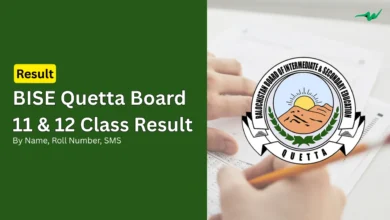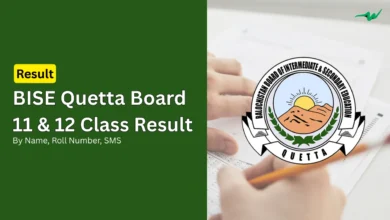
Solved Unit 6 Module -1
Self-assessment checklist
Mode User’s name will be logged and shown with answers
- Identifying my learners’ errors during oral communication activities and providing constructive feedback 5▾
- Using assessment during oral communication activities to monitor my learners’ understanding and my own subsequent teaching 5▾
- Defining appropriate assessment criteria for oral communication activities 5▾
- Applying assessment criteria consistently during various types of oral communication activities 5▾
- Engaging my learners in self and peer assessment during oral communication activities 5▾
- Preparing my learners for formal oral communication assessment 5▾
Assessment and Learning
Complete the following sentences, using for, as, or of:
Check your understanding by putting of, for, and as in the correct places.
- Assessment for▾ learning enables teachers to modify their teaching and give students feedback
- Assessment of ▾ learning provides judgments about grades and promotions
- Assessment as▾ learning provides means to self-monitor and self-correct or adjust
Types of Assessment
Think about what you have learned so far about Assessment of Learning (AOL) and Assessment for Learning (AFL). Drag and drop the right options in the table to check your understanding.
| Assessment | Of Learning | For Learning |
|---|---|---|
| Type | summative | formative |
| Who is this for(or who does this) | teachers | teachers and peers |
| When | mid-term or final report | ongoing feedback |
| Why | ranking and reporting | Improving learning |
| Emphasis | scoring marks and competition | feedback, support and collaboration |
Applying in your own Context
Mode User’s name will be logged and shown with answers
- How effectively am using questioning during my lessons? 4 ▾
- How effective is my use of feedback to my students? 4 ▾
- How effective is my use of peer feedback? (students giving feedback to each other) 4 ▾
- How much do I use learner self-assessment in my practice? 5▾
- Am helping my students learn effectively from summative assessments? 5▾
What do you know?
What features are assessed during oral communication
| What Features are assessed during Oral Communication |
Tick the Correct |
|---|---|
| Communication | ✓ |
| Reading | |
| Fluency | ✓ |
| Accuracy | ✓ |
| Interaction | ✓ |
| Pronunciation | ✓ |
| Vocabulary | ✓ |
| Skimming | |
| Task Completion | ✓ |
What have you learnt in this Module?
Choose the odd one out from each group of key words.
Example:
Teacher / Learner / Classroom / Parent
Classroom is the odd one out. The other three things are people but ‘classroom’ is not.
Question 1: In Unit 1, you learnt about different aspects of pronunciation and how oral communication differs from written communication.
- intonation
- sentence stress
- Noun
- phoneme
Question 2: In Unit 2 you learnt about types of speaking activity, functional language in speaking activities and how to motivate learners to speak.
Choose the odd one out:
- essay
- Show and tell
- role-play
- discussion
Question 3: In Unit 3 you learnt about planning clear instructions, planning oral communication activities and factors which help or hinder oral communication in lessons.
Choose the odd one out:
- negative self-talk
- lack of vocabulary
- correct equipment
- Fear of making errors
Question 4: In Unit 4 you learnt about interaction patterns, controlling the pace and timing of activities, and managing the different stages of an oral communication lesson.
Choose the odd one out:
- groupwork
- principal
- mingle
- pairwork
Question 5: In Unit 5 you learnt about differentiation and inclusive practices.
Choose the odd one out:
- set words and phrases
- repetition
- open-ended task
- fluency
Question 6: In Unit 6 you learned about Assessment of Learning, Assessment for learning and different ways oral communication can be assessed.
Choose the odd one out:
- warmer
- recorded monologue
- interview
- presentation
Self-assessment
Mode User’s name will be logged and shown with answers
- Identifying my learners’ errors during oral communication activities and providing constructive feedback 5▾
- Using assessment during oral communication activities to monitor my learners’ understanding and my own subsequent teaching 5▾
- Defining appropriate assessment criteria for oral communication activities 5▾
- Applying assessment criteria consistently during various types of oral communication activities 5▾
- Engaging my learners in self and peer assessment during oral communication activities 5▾
- Preparing my learners for formal oral communication assessment 5▾
Unit 6 Quiz
Question 1: Summative assessment is ongoing and formative assessment is the final grade we assign to learners.
Select one:
- True
- False
Question 1: Speaking and listening are actively taught and practised through communication activities.
Select one:
- True
- False
Question 2: Assessment of learning provides judgments through grades.
Select one:
- True
- False
Question 3: Peer support helps learners to learn better.
Select one:
- True
- False
Question 4: Formative assessment is useful for planning.
Select one:
- True
- False
Question 4: Formative assessment can only tell us a student’s weaknesses, not their strengths.
Select one:
- True
- False
Question 5: Teachers can assess speaking more effectively using a rubric.
Select one:
- True
- False
Question 5: A teacher should award grades after conducting Formative Assessment.
Select one:
- True
- False













